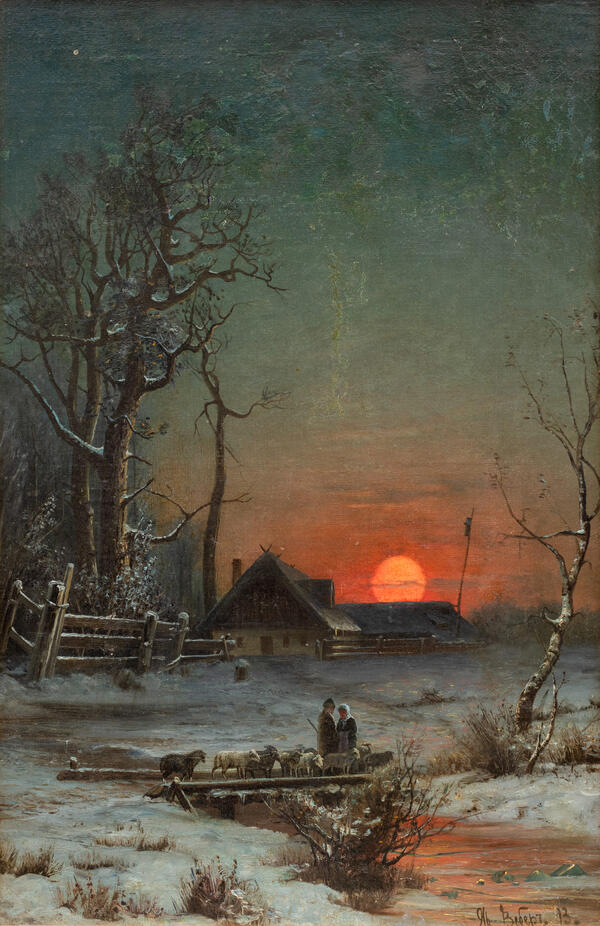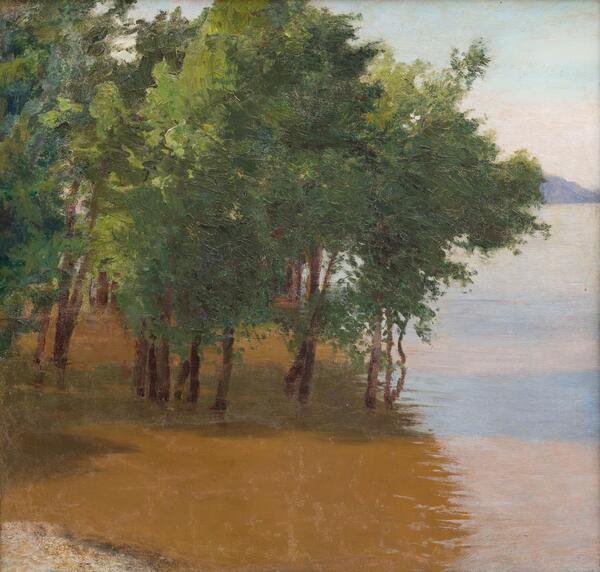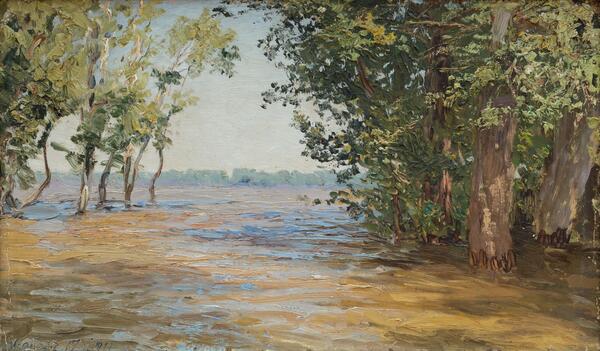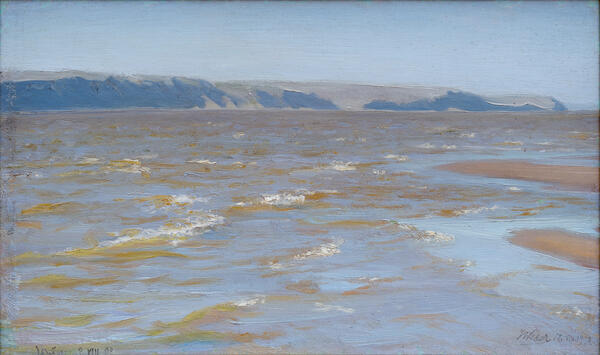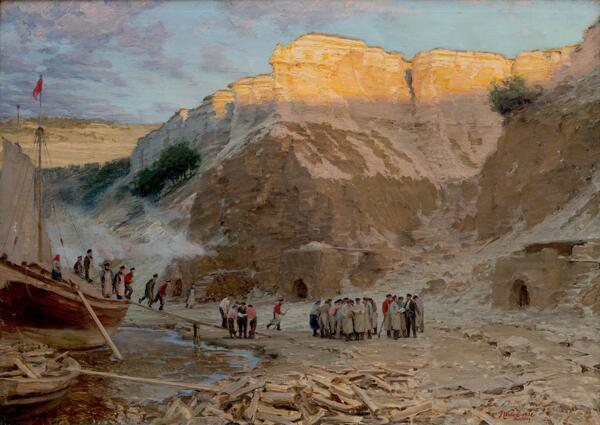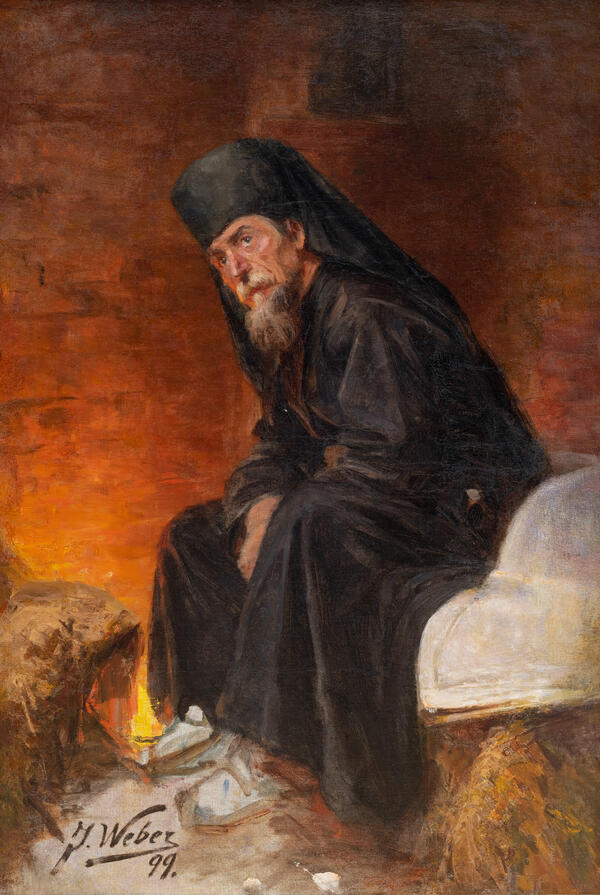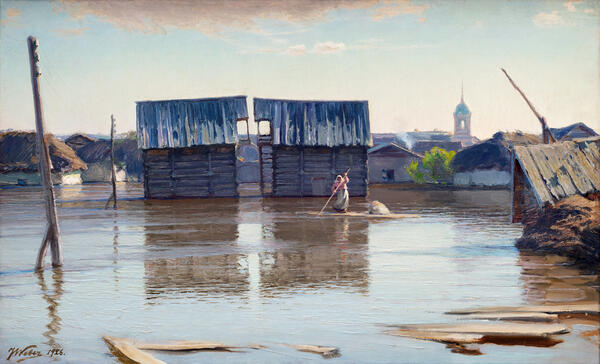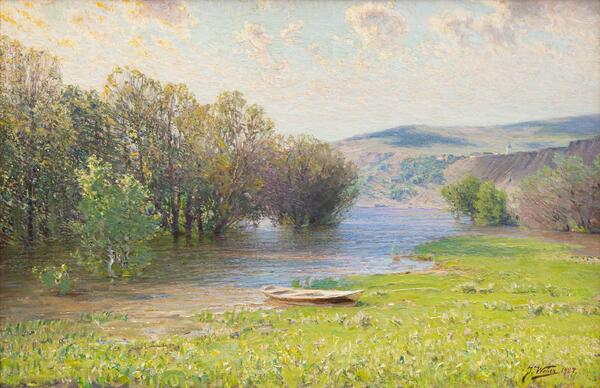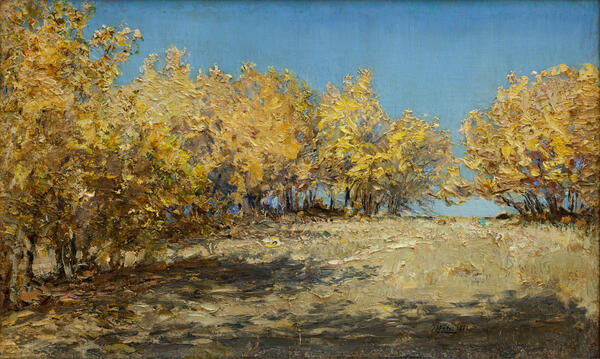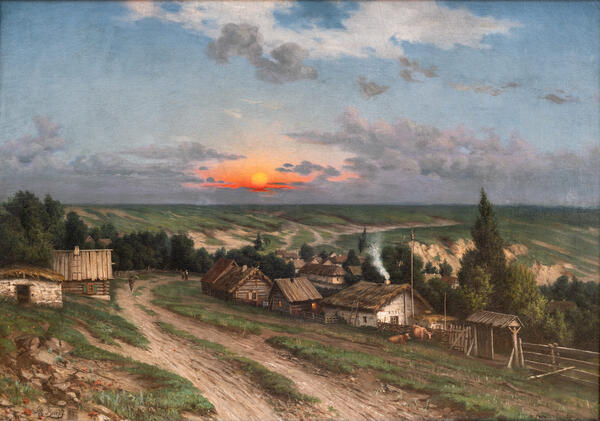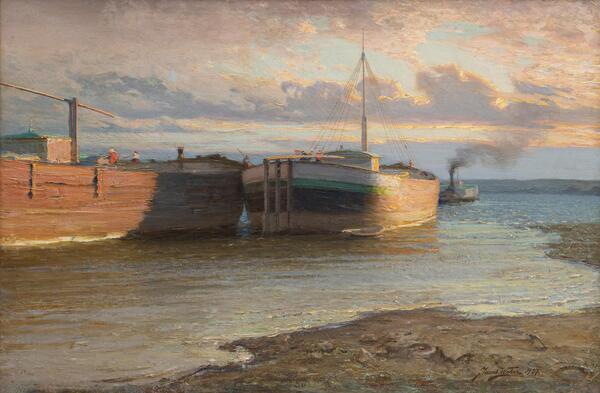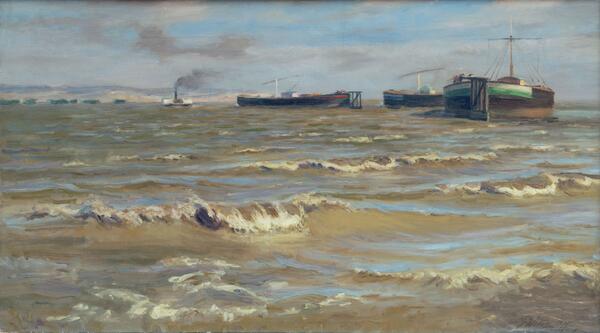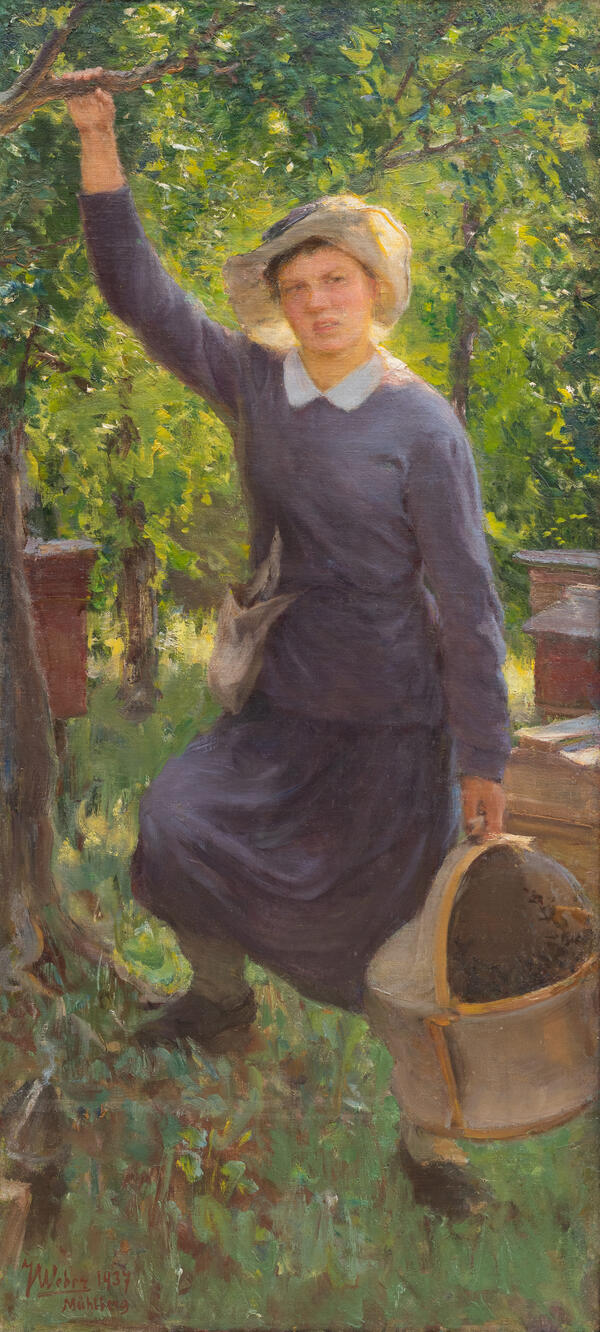The collection of the Engels Museum of Local Lore includes a study by Yakov Yakovlevich Weber “Boat off the Shore”. It was painted in 1905 on the Volga, where the artist had to leave St. Petersburg because of the revolutionary events. Bloody Sunday on 9 January — the shooting of unarmed demonstrators — caused a public uproar. The youth at the Academy of Arts went on strike too. Fearing revolutionary activity among students, the tsarist government ordered the suspension of classes, which only resumed two years later. All this time the artist lived and worked in the German settlement of Mühlberg (Scherbakovka), located south of Saratov on the picturesque bank of the Volga, where Weber went every summer as a student, renting a dacha there. However, this study was painted in the village of Rovnoe (Zelman).
The format of Weber’s studies is usually horizontal
and large. “Boat off the Shore” is no exception. The canvas depicts a quiet
summer day. A light breeze slightly ripples the surface of the water. A strip
of emerald-green islands can be seen on the horizon. A huge boat with a
vertical mast is the center of the composition. The air and the picturesque
water surface are masterfully conveyed. There is a variety of subtle color
nuances in the interpretation of the water and the sky. The colors gain depth,
creating an exquisite range of shades of warm, golden, bluish-silver tones. The
calm poise of the composition conveys a sense of grandeur and beauty. These
features will be characteristic of many of the artist’s Volga landscapes. It is
noteworthy that Weber had a rather small circle of favorite themes, which he
varied. These are diverse states of the Volga with or without boats, barges,
rafts, and steamships on the water. Having concentrated his work throughout his
life on the development of a few similar subjects, the artist achieved
excellent results in embodying them. Weber’s high skill makes it right to refer
to the Volga as the Weber’s Volga, like the typical Korovin’s roses (painted by
Konstantin Korovin), Zhukov’s drawing rooms (by Stanislav Zhukov), Turzhansky’s
horses (by Leonard Turzhansky), Stepanov’s hunts (by Alexey Stepanov), and
Malyavin’s peasant women (by Fillip Malyavin).




